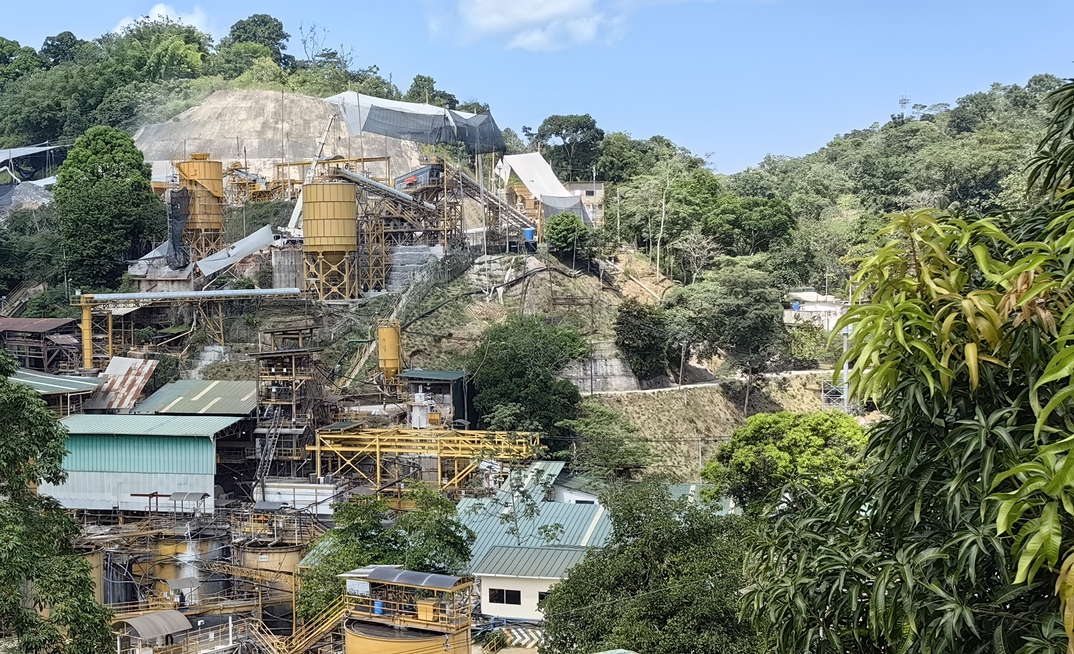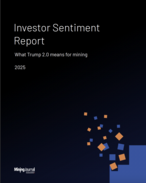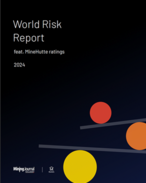The sun beats down on the undulating green hills of Segovia, Antioquia, an hour's flight north of the Colombian capital, Bogota, where transformations are underway. This is of course the expansion Aris Mining is undertaking at its Segovia Operations to boost production from 200,000ozpa to 300,000ozpa in late 2025.
The company is also championing a social transformation of the marginalised community of 70,000 people based on education, environmental control and embracing the region's history of small mining.
For over 170 years, gold has been extracted from the high-grade quartz veins carrying free gold in the hills around Segovia, Colombia's most famous gold district. Formal mining has produced at least 6Moz over the years, with possibly as much as 9Moz produced from the region when factoring in informal mining production.
The small miners are going to mine with or without Aris, a relative newcomer to the region in 2022 after merging with Gran Colombia Gold, and so finding ways to coexist and incorporate them into the company's plan is key to maintaining social license to operate.
YOU MIGHT ALSO LIKE
That is the vision of chief executive Neil Woodyer, a mining veteran who has been accompanied by parts of the team he worked with when he ran Leagold Mining before its C$1.3 billion merger with Equinox Gold in 2019, and before that, at Endeavour Mining.
For over 170 years, gold has been extracted from the high-grade quartz veins carrying free gold in the hills around Segovia, Colombia's most famous gold district
Small miners, therefore, feature in the company's growth plan as Aris seeks to build on the 226,000oz it produced in 2023 at Segovia and its Marmato mine in Caldas to produce 500,000ozpa from the second semester of 2026 through permitted and financed expansion projects under execution.
Its small miner programme will make a meaningful contribution to this figure and could unlock further riches going forward and be the key to advancing its Soto Norte project in Santander into development once the Segovia and Marmato expansions are complete.
Aris' growth plan will see it reposition with its peer group of Equinox Gold, Eldorado Gold, IAMGOLD, Orla Mining, Calibre Mining, K92 Mining, Lundin Gold, Torex Gold Mines and New Gold, lifting it to become one of the few companies in the 500,000-1Mozpa production bracket.
This is a group that is expected to handsomely rerate within a higher gold price environment. "Companies that produce 500,000ozpa have a market capitalisation measured in billions. Today we rank at the bottom of the pack at $700 million," Woodyer told Mining Journal at the company's office in Bogota ahead of a site visit.
Funding for the company's growth comes from legacy financings by predecessor companies Gran Colombia Gold and Caldas Gold, from whom it obtained Segovia and Marmato.
The remaining amounts are US$300 million in senior unsecured 6.875% notes that mature in August 2026, and $51 million in gold-linked notes that mature in August 2027. The gold-linked notes have a 7.5% coupon, but the gold-link element bumps the cost of this capital up to about 20% at current gold prices.
It also has exchange-trading warrants that are currently in the money and expire in July 2025, with the potential to bring in $116M if fully converted, a streaming agreement with Wheaton Precious Metals with $122 million of remaining instalments, $122 million in cash and ongoing cash flow generation, that means its plans are fully-funded.
Segovia
Segovia consistently ranks in the world's top three highest-grade gold mines, with a production grade of 8-10gpt. With an annual exploration budget of about $18 million, Segovia's measured and indicated resources have grown by 114% under Aris to 3.6Moz grading 14.3gpt and its reserves 75% to 1.3Moz grading 11.6gpt, which currently gives the operation a seven-year mine life. Exploration includes infill, near mine and regional programmes over the 5336 hectares of its Segovia concession.
Segovia includes four underground mines: El Silencio, Providencia, Sandra K and Carla, accessed via inclined shafts. El Silencio is the biggest producer and has the highest grade. It is also the deepest, mined down to a vertical depth of 1000m.
Ore is processed at the Maria Dama plant, which has crushing, milling, a gravimetric circuit that recovers 40-50% of the gold, flotation, regrind, a leach plant and a Merill Crowe circuit, resulting in an overall recovery of ~95%.
A $15 million expansion is underway to increase its capacity from 2000tpd to 3000tpd to enable production to increase from 200,000ozpa to 300,000ozpa. COO Richard Thomas is also looking at further possible enhancements, including optical ore sorting and the potential development of a central vertical shaft to hoist ore from El Silencio, Providencia and Sandra K.
He also wants to change the mining method so that development is not undertaken in ore, as has historically been the case, but in the wall rock, as well as introducing the longwall mining method. "We would get higher productivity, and the cost per tonne would drop, but we would need to do a lot of development and to do that, we need to do more infill drilling first," he said.
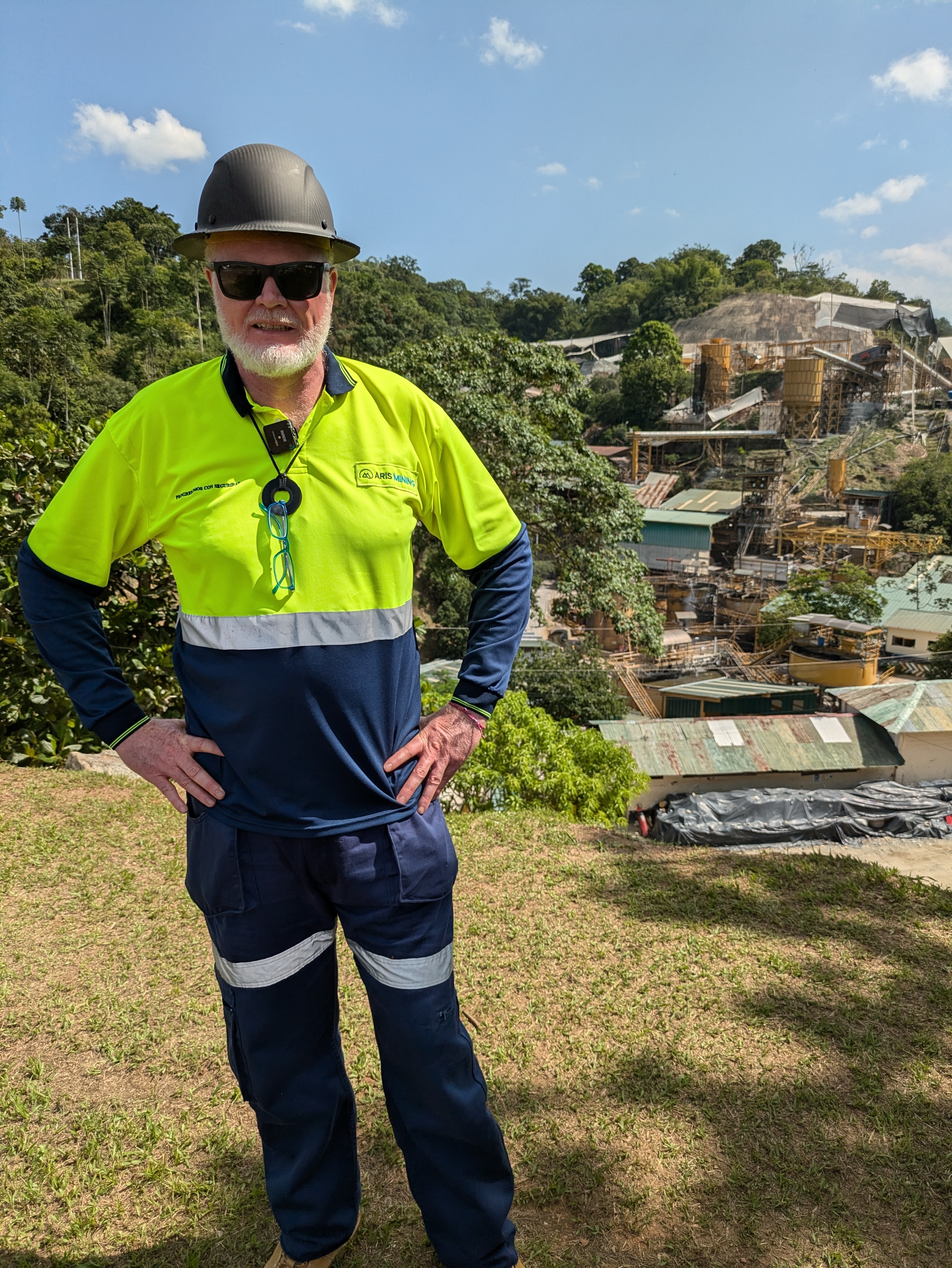
Small miners
Small mining has been part of Segovia's fabric ever since Frontino Gold Mines was put into administration in 2004.
Aris has built on the commercial relationships that Gran Colombia developed with small miners and extended those into its contract mining partners (CMP) model for those within its mines and infrastructure footprint and elsewhere within its concessions.
Woodyer acknowledges the foundation Gran Colombia laid to begin modernising and mechanising the mines and formalising hundreds of small miners to secure ore sources and reduce the tensions and fears of displacement among them. Under CMP, Aris is taking this further. "We realised partnership with the small miners was the way to go. We are collaborating with them as partners," said Woodyer.
Some 50% of Segovia's production is sourced from small miners, most of whom use mechanised or semi-mechanised mining methods and send ore to the company's Maria Dama plant. The company also acquires material from third-party CMPs outside the Segovia tenement, with grades of up to 30gpt.
This material only occupies 5% of milling capacity and can be blended with company ore to achieve a mill feed of 8.5-10gpt. They are paid a percentage of the gold price to ensure a relatively fixed margin for Aris.
The benefits are multiple for all stakeholders: the small miners benefit from higher gold recovery of 90-95% compared with 40% using traditional, often informal, methods; water and environmental management are improved, with tailings deposited into a proper tailings storage facility, rather than being dumped; Aris works with them to raise their health and safety performance, and operating efficiency; and as formal operators, the small miners pay taxes, have health insurance and other benefits they did not enjoy before.
The model's success saw Aris invited to present it, together with some of the small miners, to a packed audience at the OECD in Paris, France, in 2023.
"This is exactly what the government wants. They want formal companies to formalise small miners, remove mercury from the environment, use environmental controls and pay tax," said Woodyer.
Safety and environment
Through its Vision Zerooo programme, Aris has improved worker safety. This includes using an app-based through which workers can photograph any situation and log it as a ticket that needs to be addressed. Any tickets not resolved within a specified timeframe, see COO Thomas get an alert.
Safety is also a feature in the calculation of worker production bonuses. "We have seen a decrease in the severity of incidents. Many accidents used to be caused by falling rocks. Now, they are mainly things to do with hands and feet getting pinched," said Thomas.
Looking at the company's safety statistics, a noticeable decline began in September 2022 when Aris took control of the assets and implemented its Vision Zerooo programme, although the impact has not been equal across its two mining sites. Aris includes small miner accidents in its figures, which means they cover some 7000 workers.
At Segovia, it has reduced accidents, as measured by lost time frequency rate (LTI), by more than 60% since taking over the operations. At Marmato, LTIs fell 81% in 2023 and 35% so far in 2024, registering less than 2 LTIs per month on average over the first seven months of 2024.
"The programme is not performing as well at Segovia as it is at Marmato. However, at Marmato, we mainly have internal people working, whereas at Segovia, we have a lot of third parties," said Thomas.
At Segovia, it has reduced accidents, as measured by lost time frequency rate (LTI), by more than 60% since taking over the operations
Other examples of positive change include the investment in a polymetallic plant to extract zinc and lead. This was originally conceived as an environmental and social project to reduce contaminants in the tailings but rapidly turned into an income stream, generating about $10 million a year in additional revenue.
Additionally, using filtered tailings makes them easier to manage and facilitates the recycling of 75% of the process water.
By the end of 2025, this increases to 90%. The company also engages with the community to agree on a secondary usage of full tailings areas. The first tailings closure project saw the creation of a sporting facility, while the second will be a solar power generation facility.
This will help reduce the cost of power to the company and lower its carbon footprint, and Aris will eventually turn it over to the municipality. Segovia has been recognised as a very low-emission gold mine by leading consulting group Skarn Associates, as half of its power comes from hydroelectric sources, with the remainder supplied from Colombian utility EPM under a power purchase agreement that guarantees the use of renewable energy sources.
Outreach
One of the most meaningful social contributions is the Spanish / English bilingual school that was developed for $1.5 million and for which Aris provides $1 million a year to fund the tuition fees of its 875 students. The school recently celebrated its first graduation class of over 50 students, of whom a handful will attend university.
"The students score 50% higher than the local average in national testing, so there is a lot of competition to get into the school," said country manager Alejandro Jimenez.
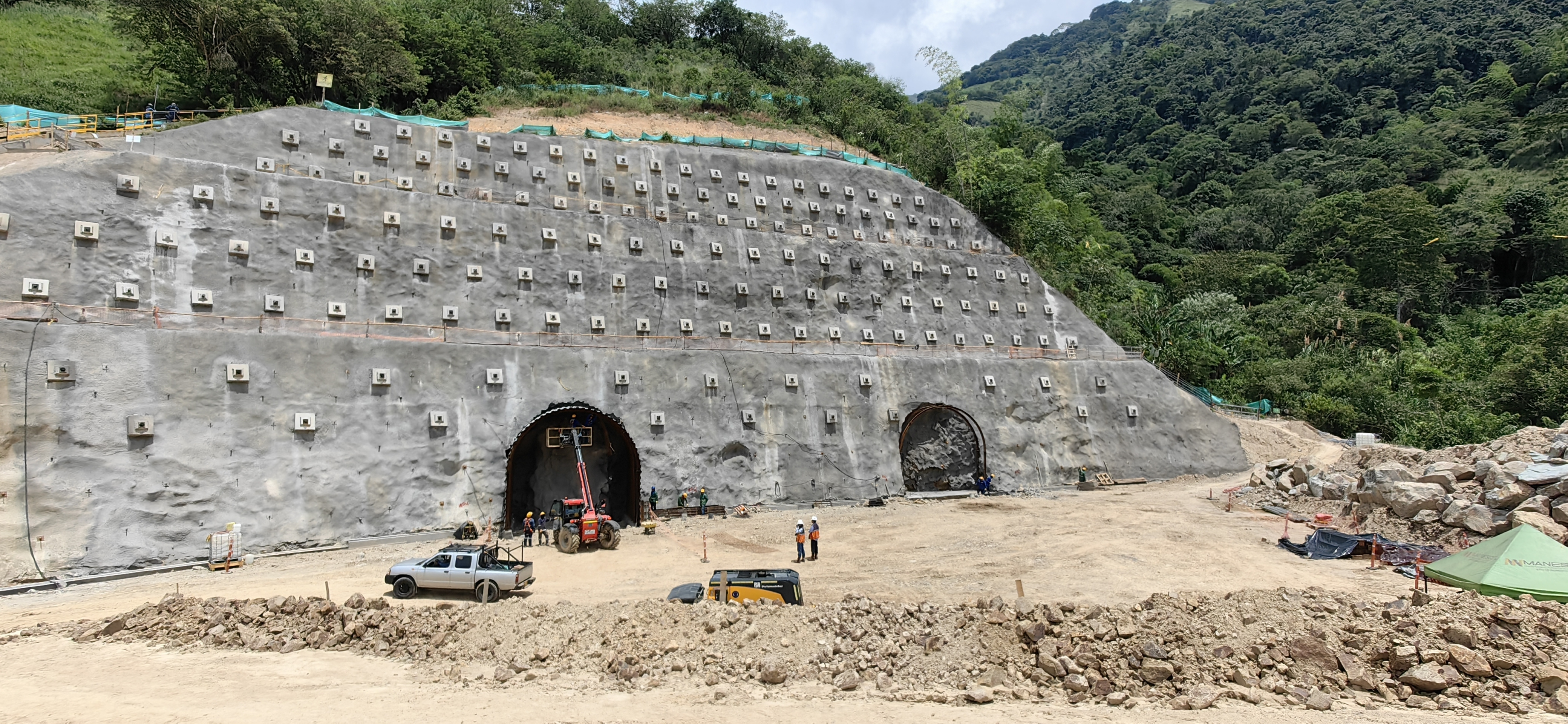
Marmato
It is not just Segovia where Aris is actively growing production. A major new development is underway at Marmato in Caldas. Marmato is another mine with a long history and an even longer history of small miners. For a fuller history, see this piece I wrote in 2021. The mountain rises above the Cauca River and is distinguishable by broad vertical yellow scars in the upper part of the mountain that bear witness to hundreds of years of exploitation, which at times have induced landslides.
A closer look at the mountain reveals both the town located within those scars and that some of the discolouration is caused by artisanal miners and their waste and tails that have been tipped down the mountain for generations and which continues to this day.
However, this is not the part of Marmato that interests Aris. Having seen how previous operators, including Colombia Goldfields, Medoro Resources and Gran Colombia Gold, faced intense resistance to exploit the upper part of the mountain, Aris is focused on an ore body deep within the mountain, far beyond the reach and technical capability of the small miners who work the upper mountain.
Discovered by Gran Colombia Gold in 2012, the Deeps project, as it was then called, rapidly became the large-scale development focus, allowing the company to shelve its previous open pit ideas and leave behind the social conflict that the plan generated.
Aris is now realising that goal and advancing on the $280 million development of a large-scale underground mine in the mountain's depths to produce 162,000ozpa for 20 years.
Some 350,000m of drilling has defined reserves of 31.3Mt grading 3.16gpt gold for 3.2Moz of gold and 6.1Moz of silver, and measured and indicated resources of 61.5Mt grading 3gpt for 6Moz of gold, and 14.2Moz of silver.
These give the project an initial 20-year mine life, within the 2Mtpa total material mined limit of its permit. The geology differs from the mineralisation style exploited in the upper mine, so processing will be via CIP rather than flotation. "There is more free gold, and it is more finely disseminated," said Thomas.
The new mine will use the long hole stoping with paste fill mining method and feed a 4000tpd plant to be sited a stone's throw from the Los Indios portal. The environmental permit was issued in July 2023, with conditions including vibration monitoring, which means that Aris will use lower-impact explosives for the first 250m of the ramp.
The project is 22% complete, with the construction of the portal access road beginning in November 2023, permitting the construction of a 32km overhead 115kv power line to the nearest substation underway and being managed by the contractor that will build it.
The Los Indios portal is in place where a 1751m twin decline with a 13-degree gradient will enter the orebody at the 755 level and provide a 5.5m by 5.5m access route. Crosscuts and other developments on the decline will see it total 3800m of aggregate length. A contract for the decline development is expected to be signed soon, with tunnelling expected to start in September.
At its existing Upper Mine, which produces 25,000ozpa, Aris is developing to levels 22 and 23 to mine the transition zone leading towards the Lower Marmato orebody. The El Higueron tunnel access into the upper mine will provide additional access to the lower mine.
From the new decline, Aris will initially mine upwards towards the transition zone, which is below the lower levels of the existing mine.
"We will mine level 20 and below into the transition zone above the lower mine as there is thick vein mineralisation we can mine with long hole open stoping. There will be an ore pass into the lower mine," said lower mine project manager Axel Schultz.
The $92 million, 4000tpd plant will feature crushing, SAG and ball milling, gravity recovery, leach, CIP, tailings thickening and filter plant to achieve an estimated 90% gold recovery. The first gold is anticipated in December 2025, and commercial production will follow a ramp-up period in 2026.
"The critical path items are the twin decline development and the two main transformers, which have been bought and are in fabrication. We will bolster our team to have a much stronger owners' team," said Thomas.
With $34 million spent through June, the estimated completion cost is $246 million. $122 million will be funded by a Wheaton Precious Metals stream, with Aris to fund $124 million. The stream will see Wheaton take 10.5% of gold production, reducing to 5.25% once the finance is repaid.
Wheaton will also initially receive 100% of the silver, which will then decrease to 50%. It will also initially pay 18% of the spot gold and silver prices, which later increases to 22%.
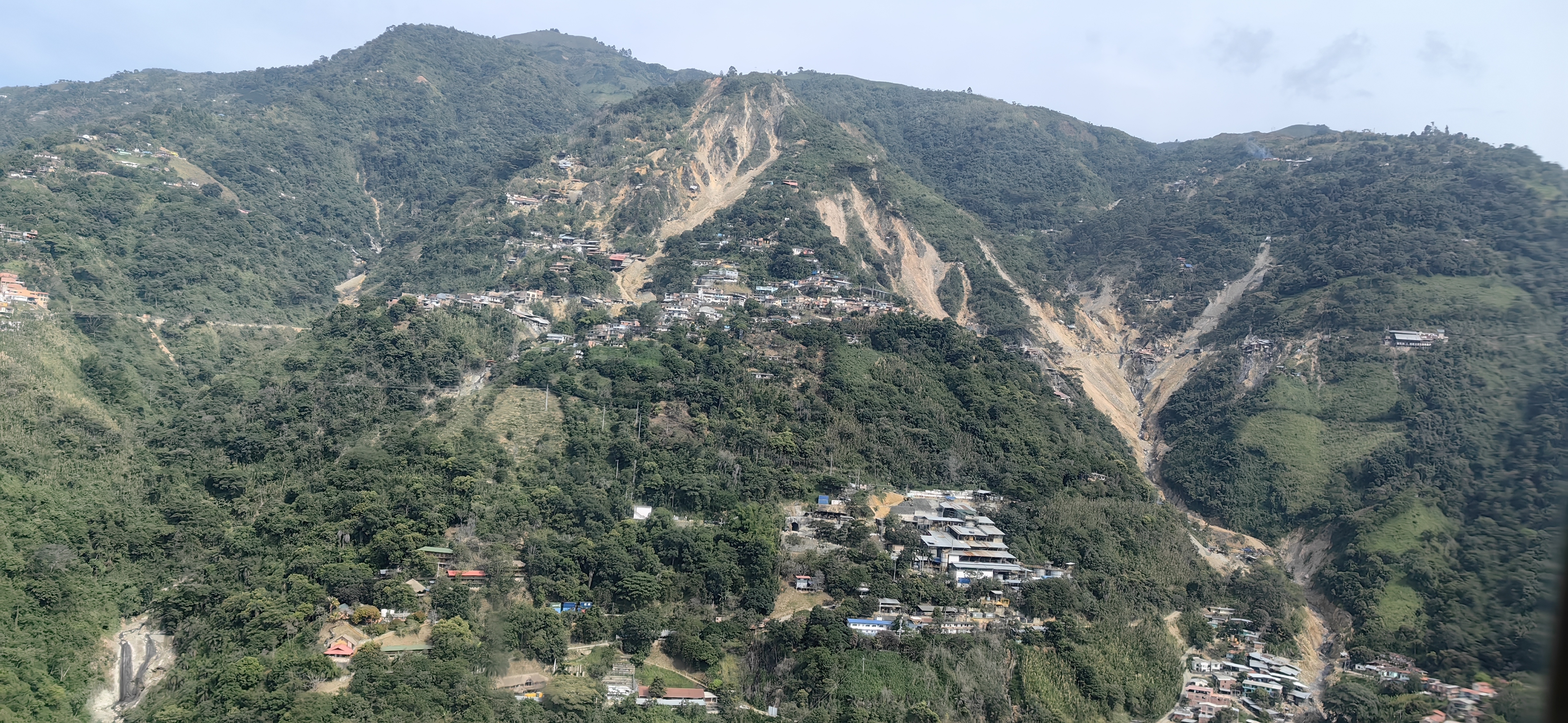
Marmato small miners
Small miners also feature in Aris' Marmato plans as it aims to transition the current Upper Mine into its small miner programme. Its initial effort to this end sees Porvenir, a small miner partner, mining level 16, with its operations to extend to level 17 in the coming months.
"We were fierce opponents of the [multi-national companies] for many years as they wanted to displace us. Aris looks to collaborate with us and not push us aside," Ruben Rotavista, a principal of Porvenir and a representative of the Marmato Traditional Miners Association (ASOMITRAMA), which represents 1,200 people, told Mining Journal.
"We and they have an economic incentive, the environment is better off, the government is better off, and we are uplifting the communities. It does increase complexity, but when you think of what we are getting in return, it far outweighs that. Small producers have the capacity to mine at higher grades than we do. Our mining width is 1.2m, so we get a lot of dilution. Where we get 2.5-3gpt, they get 6-8gpt," said Thomas.
Beyond this, Aris wants to incorporate some of the small miners from the upper parts of the mountain that have exploited narrow veins for generations, which are in process. The company is seeking to engage the small miners to formalise them and bring their material into the 1000tpd plant.
This would help miners obtain more of the value of the ore they mine and help the National Mining Agency and regional environmental authority, Corpocaldas, address the issue of the informal processing plants that line the roads through the Marmato community and discharge their waste into the environment.
Rotavista said the concept is attractive to many small miners.
"The miners on the upper mountain had over 90 serious accidents last year and 19 fatalities. They do the work and take the risk to mine the gold but only get about 8% of its value after the middlemen, processing plants, and gold buyers take their cut," he said.
Soto Norte
Woodyer believes Aris' small miner and other social programmes are the key to unlocking the Soto Norte project in Santander and obtaining government support to develop a mine there. It is working towards a smaller project than previously considered: the proposed processing plant is expected to be 50 – 60% smaller than the 2022 Feasibility Study design of 7,200tpd, with a longer operating life.
"We will go for the higher-grade material early and no 6.9km tunnel with tunnel boring machines. The speed of construction increases cash flow in the first five years, and it would be better than under the big build model. And we are building small miner capacity into this," said Woodyer.
Aris convinced the project owner, Mubadala, of this plan, which enabled the company to increase its interest in the project from 20% to 51% in June and saw Mubadala become a 9.3% shareholder in Aris.
By proving that issues with mining and impacts come from illegal mining, formal miners like Aris can be seen as the solution, cleaning the water and protecting the paramo
A formal redesign is scheduled to be released in early 2025.
"We realised it was the wrong mine being advanced and developed a new superior mine design, resulting in an enhanced cash flow profile, very attractive economics, i.e. better returns, less risk, and more environmentally friendly and socially acceptable."
"We have strong community support from the six mayors of the Soto Norte area and the Santander governor."
"We are not making the story up, and we are not selling dreams. The map [of community disapproval] has completely changed due to the communication programmes we did for a year and a half. By proving that issues with mining and impacts come from illegal mining, formal miners like Aris can be seen as the solution, cleaning the water and protecting the paramo," he said.



